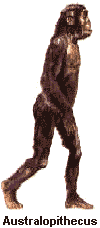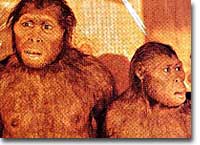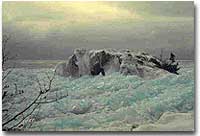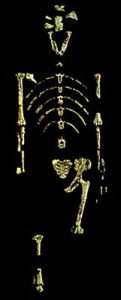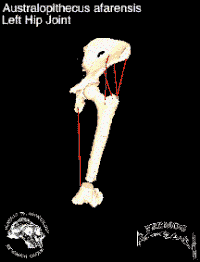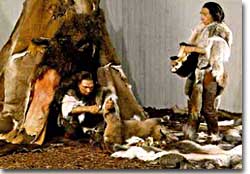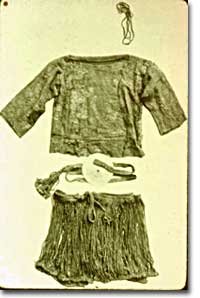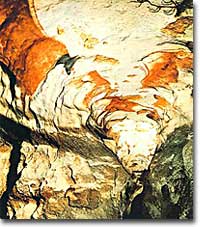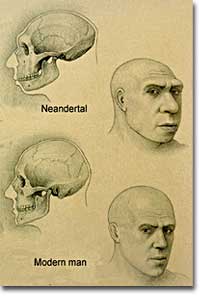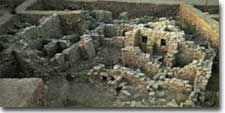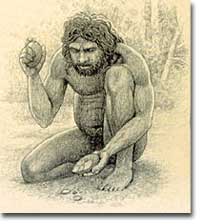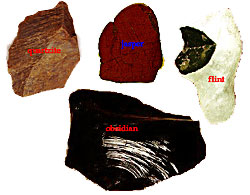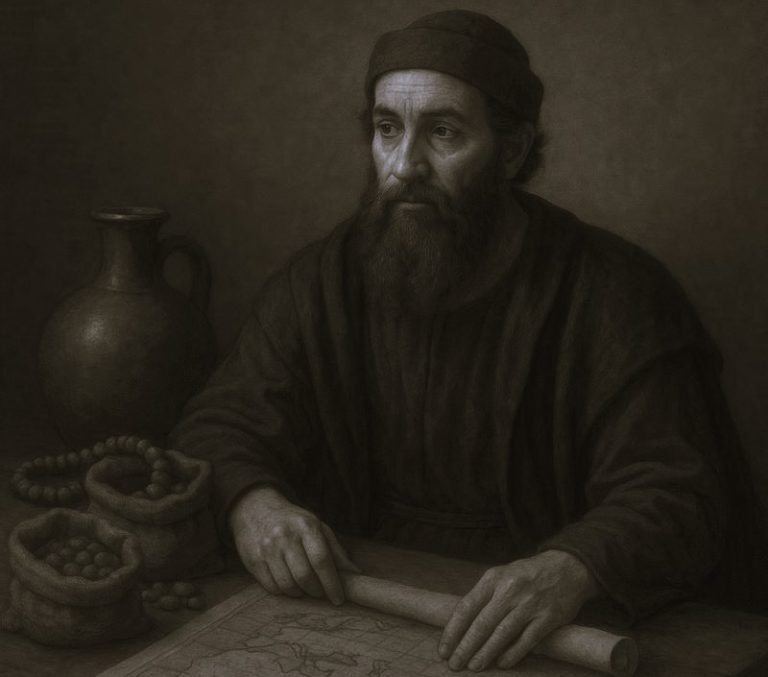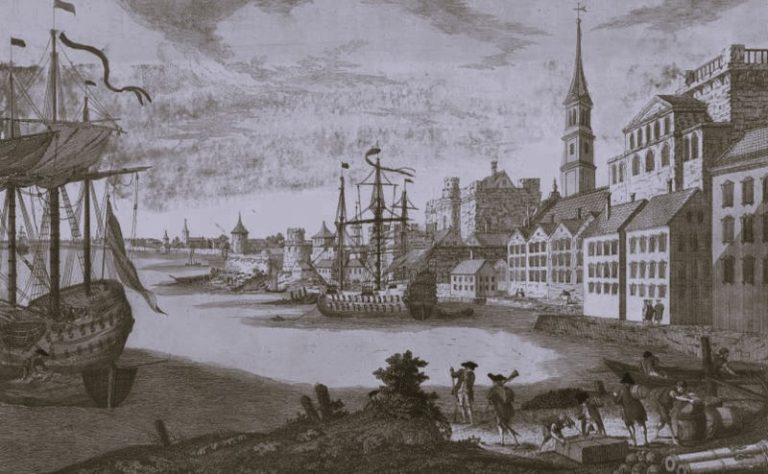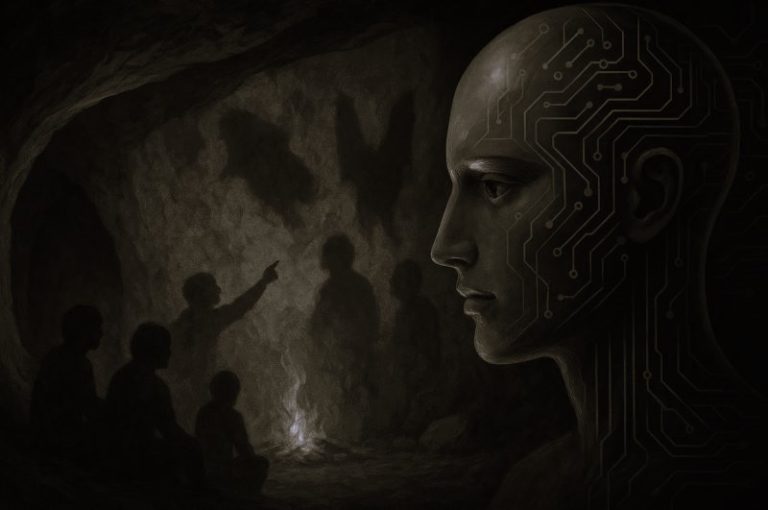From the Lascaux Cave
Introduction
What did the earth look like four million years ago? Who lived here? What did they look like?
Humans are curious creatures. We want to know where we came from, in part, as a way of figuring out where we are going in the future.
Our need to know is sometimes overwhelming. Archaeologists and anthropologists dig through dirt, study DNA samples, examine artifacts, and try to construct a picture of the earliest human ancestors.
Archaeologists study the physical evolution of man as well as the development of the human condition over the ages.
Artifacts, by the way, are not facts about art. Rather, artifacts are things created by humans (tools, vases, clothing) for practical purposes.
Can You Dig It?
Digging into our ancestors’ past is hard work. Records of human life were not kept millions of years ago. What was life like for cavepeople in the Stone Age? Did Fred Flintstone actually wear leopard skin suits and eat brontosaurus burgers?
Evidence of life from about 30,000 years ago has been found in cave paintings, in burial chambers, and in the form of crude tools. But what about time dating earlier than that? This “Prehistoric” period — before writing and civilizations — is called the Stone Age and is extremely valuable to our understanding of our earliest hominid ancestors. Hominids comprise humans today, extinct ancestors, and apes that share similarities with humans.
The earliest and longest period of the Stone Age is called the Paleolithic Age. This comes from the Greek word Palaios, meaning “long ago” or “old,” and lithos, meaning “stone” — put together, Paleolithic Age means Old Stone Age.
This may have been what early human ancestors looked like over three million years ago.
The Old Stone Age began approximately 4.5 million years ago. It lasted until about 25 thousand years ago — relatively recently in terms of the overall age of the earth. It was at the beginning of the Old Stone Age, approximately 4.4 million years ago, that the first human ancestors made their appearance on earth.
Approximately 3.5 million years ago, hominids began walking upright. What did they eat? Where did they live? The archaeological evidence is not clear. Those who study the earliest hominids do know, however, that these human ancestors physically changed in response to their environment.
Chill Out
Dramatic changes in world climate started taking place about 1.5 million years ago. Most of the world became cold — really cold. This plunge in temperature began one of four distinct periods of frigid temperatures known as an Ice Age. Each of these frigid periods lasted from 10,000 to 50,000 years. The most recent chilled the Earth just over 10,000 years ago.
Photo Courtesy of Jeff Gunderson, Minnesota Sea Grant / The glaciers created in the Ice Age covered much of North America. This Canadian glacier is still retreating.
During this most recent Ice Age, the northern polar icecap moved so far south that massive sheets of ice were created over much of the northern hemisphere. In some areas the ice was several miles thick. About 1/3 of the earth’s surface was encased in an icy layer — that’s four times the amount of ice normally found on earth today. Naturally, hunting and gathering abilities were interfered with during the Ice Ages.
Once these frigid years were over, a revolution took place — humans started planting crops. This new way of life, which began about 10,000 years ago, led to permanent settlements and the world’s first communities. Farming and the domestication of animals mark the beginning of the Neolithic Age, also called the New Stone Age.
So what then did Fred Flintstone wear and eat? What follows is a look at some of our earliest known human ancestors — how they lived, how they changed, and how they interacted with their environment.
Archeologists and anthropologists “meet the Flintstones” every time they unearth the remains of prehistoric people. Their work helps to answer profound questions:
- Who are humans?
- Where did we come from?
- Where are we going?
| Years ago | Epoch (Geological) |
Hominid Species | Famous Finds | Cultural stage | Cultural flashpoints |
|---|---|---|---|---|---|
| 4.4 million | end of Pliocene | Ardipithecus | remains found by Tim White, etc. | Paleolithic (Old Stone Age) |
pebble tools, hand axes, choppers |
| 3.2 million | Australopithecus | Lucy | |||
| 1.8 million | Australopithecus | Zinjanthropus Man | |||
| 1.6 million | Homo Habilis | Cindy | |||
| 1 million | Pleistocene (Ice Age) (Glacial Epoch) |
||||
| 700,000 | Homo Erectus | Pithecanthropus (Java Man) |
|||
| 500,000 | Homo Erectus Homo Erectus |
Heidelberg Beijing Man |
fire | ||
| 200,000 | Homo Sapiens | Rhodesian Man | flake tools | ||
| 60,000 | Homo Sapiens | Neanderthal Man | buried their dead | ||
| 50,000 | Homo Sapiens | Old Man | cave paintings, sewing, spears | ||
| 25,000 | Homo Sapiens | Cro-Magnon | |||
| 10,000 | Holocene | all modern people | Mesolithic (Middle Stone Age) |
use of animals, farming, bows and arrows, harpoons, canoes | |
| 8,000 | Neolithic (New Stone Age) |
villages, saws, drills, pottery, weaving, plow | |||
| 5,000 | Bronze Age | wheels, cities, writing | |||
| 3,000 | Iron Age | use of iron, alphabets, empires | |||
“I Love Lucy”
Lucy is an Australopithecus afarensis. This fossil was discovered by Donald Johanson and Tom Gray in 1974 at Hadar in Ethiopia. It is estimated to be 3.2 million years old.
Singer Elton John is connected to our original, ancient ancestors. In 1974, his cover of the Beatles hit “Lucy in the Sky with Diamonds,” echoed throughout the night in the barren landscape of Hadar, Ethiopia.
Paleoanthropologist Donald Johanson and his team were blasting this song on their cassette player inside their work tent. (A paleoanthropologist studies fossil hominids.) They were celebrating the discovery of the oldest known hominid ancestor. Inspired by the song, the team named the partial skeleton, “Lucy.”
Lucy was a newly discovered species named Australopithecus afarensis and lived 3.5 million years ago. Many scientists came to regard her as the mother of humankind. Who was Lucy? What was life like for her?
A more pressing question: What was Lucy? She had both ape and human characteristics. Which was she? She is actually related to both humans and apes.
Based on the partial skeleton that he assembled, Johanson concluded that Lucy had a receding forehead and prominent face, much like an ape. Her softball-sized brain was a little larger than a chimpanzee’s, yet much smaller than a modern human’s. Her dark skin and patchy hair protected her from the sun of tropical Africa. The lush, green environment near the Awash River seemed to be her home and this region was one of the few areas in which apes could live.
Yet Lucy’s knee joint looked vaguely human. This joint was capable of locking straight up. Unlike the quadrupedal ape (which walked on all fours), Lucy seemed to be a bipedal (able to walk on two legs) with the capability of walking erect over long distances. She was thus able to travel in search of food.
Lucy’s bone structure allowed her to move in similar ways to modern-day humans.
Over thousands of years, Lucy and her ancestors physically adapted to their changing natural environment. Open grasslands replaced the shrinking dense forests of the Great Rift Valley. Since Lucy walked upright, she could stroll across the grasslands from forest to forest and use her free hands to gather food. This was a major development. Lucy’s diet consisted of fruit, small animals (such as field mice), bird eggs, and even insects. Archaeologists believe Lucy was able to extract termites from their mounds using a blade of grass. This is an important capability because it demonstrates that Lucy, and others like her, were developing a more advanced use of their hands. And that ability bring Lucy a step closer to us — humans.
Lucy: In a Class by Herself
Lucy belonged to genus Australopithecus and the species afarensis, but she also belonged to the the hominid family (hominidae) to which humans belong. Although humans are of the family hominidae, we are not of Lucy’s genus or species. We are Homo sapiens. How then, can Lucy be our ancient ancestor if we belong to a different genus and species? It’s because humans and Lucy share a taxonomy up to the point of genus and species; there are many shared characteristics, but there are differences and these differences place humans in our own genus and species.
What Is a Taxonomy?
| Taxonomic Category | Human Taxonomy | Defining Features |
| Kingdom | Animalia | Humans are animals — not plants |
| Phylum | Chordata | Chordates have nerve fibers running along the midline of the back |
| Subphylum | Vertebrata | Vertebrates have internal, segmented spinal columns. The right side of the vertebrate mirrors the left side. |
| Class | Mammalia | Mammals have hair, mammary glands, and a constant internal temperature. They nurture their offspring after birth. |
| Order | Primates | Primates have specialized structures in the ear region and an enhanced blood supply to the brain. |
| Suborder | Anthropoidea | Anthropoids are social animals that are active in the daylight. |
| Superfamily | Hominoidea | Hominoids have similar back teeth, shoulder muscles and bones. Hominoids do not have tails. |
| Family | Hominids | Hominids walk on two feet. |
| Genus Species | Homo sapiens | Homo sapiens share characteristics in the details of brain and tooth size. |
Humans and apes are both in the Hominid family. As hominids, we share many physical similarities in bones, back teeth and shoulder muscles. Neither the apes nor the humans have tails and we all walk on two feet .
Now take Lucy. She is a hominid because she was bipedal, but she was of the genus species Australopithecus afarensis. Australopithecus represents her genus name (which is always capitalized), and afarensis, is the species name (which is always in lower case). So, while Lucy and modern humans share some traits like the ability to walk upright, there are too many structural differences to classify us in the same genus.
The species is generally the smallest working unit in the classification of plants and animals. Lucy differed from the humans in both genus and species. We modern humans share some closer relatives that share our genus, Homo, but not our species, sapiens.
The Homo habilis lived about two million years ago. Like modern humans, they belong to the genus Homo which derives from the Latin word for “man.” But they are of the species habilis, not sapiens. Homo habilis translates as handy man. Homo sapiens translates as “wise man.” While the two species share many traits in common including similarities in skull and jaw shapes and the ability to make tools, there are also things that are different both physically and genetically. We’ve grown a lot along the way.
Food, Clothing, and Shelter
Neanderthal Museum / Fossilized remains show that Neanderthals lived in social groups.
Could you survive in the wild? TV shows like “Gilligan’s Island” and “Survivor” and books and movies like “Lord of the Flies” ask this question. Small groups of people are set down on a deserted island and left to fend for themselves. They have none of the things we take for granted, such as easy access to food, shelter, clothing, or video games. There are no cities, no roads, no tools, no doctors, no computers — and no malls.
In part, these shows are so compelling because it is interesting to ponder how each one of us would do in such a setting. Could you create tools, make rules, gather food, or work with wood? Could you weave clothes, protect your toes, fight off a beast, or know which direction is east?
Now take yourself back 20,000 years. For Neanderthal Man, each and every day was a challenge. What was life like for Neanderthals? How did early humans find food, make clothing, and seek shelter?
Neanderthal or Neandertal?
The first fossil of this type was found in 1856 near Germany’s Neander Thal. At that time, “thal” was the word for “valley” in German. The find became known as Neanderthal Man — named after the place where it was found.
In the early part of the 1900s, Germans began regularizing the spelling of many words. They changed the spelling of words to reflect their pronunciation. “Thal” is pronounced “täl” in German, so the “h” was dropped in the spelling of the word. Today, most scientists continue to use the “Neanderthal” spelling, while others have adapted to “Neandertal.” In either case, the word is pronounced: “nee-an-der-täl.”
Appropriately, the word “Neander” translates to “new man” in Greek.
Hominids, History, and Prehistory
Modern day farm animals were pretty different from the original wild animals. Find out where the horse and the chicken came from.
Before answering these questions, it will be useful to understand how we know what we know about early hominids. Hominids are from the family homidiane, and refer to primate mammals who could stand on two legs. We are hominids as were our ancestors, including Java Man, Neanderthal Man, Beijing Man, and Lucy.
When studying humans, historians strongly rely on written records to gather information about the past. History, as it pertains to mankind, is said to begin with the invention of writing, about 5,000 years ago.
But humans lived long before the invention of writing. Prehistory refers to this long time period before writing was invented. How do we know what life was like if there were no written records of prehistory? Anthropologists and archaeologists work together with other scientists in answering this question. They use artifacts and fossils — clues from ancient times. After testing and analyzing them, educated conclusions are made about life in prehistoric times. Some of the conclusions are wrong, some are somewhat correct, and others may be entirely correct. Some theories will change as the next generations of scientists and historians glean more information.
Imagine yourself digging through a stranger’s trash. You can draw some conclusions about his or her life based on what you find. While archaeologists don’t exactly dig through trash, they do sift through fossil remains and artifacts and try to explain things.
For the Ages
This outfit of linen string was typical fashion in the region surrounding Denmark from 600,000 to 50 B.C.E.
Prehistory is divided into different time periods. The use of stone tools by early people led historians to apply the name Stone Age to the period before writing became established.
The Paleolithic, or Old Stone Age, began about 4.5 million years ago and lasted until about 8000 B.C.E. Many anthropologists believe that creatures vaguely resembling Homo sapiens (that’s us today) may have lived at the onset of the Stone Age.
The Neolithic, or New Stone Age, lasted from 8000 B.C.E. until approximately 3000 B.C.E. By the end of this era, villages and farms had come into existence.
Scientists believe that the earliest hominids may have used caves as shelters. They probably ate vegetables and gathered seeds, fruits, nuts and other edible plants. Later, scientists speculate, meat was added to the diet as small animals were hunted. Eventually, humans hunted large animals.
In order to hunt successfully, early men had to work together. As humans became successful hunters, they migrated over great distances in search of food. For nearly a million years, however, periods of extremely cold weather during the Ice Age limited the areas to which early people could migrate. Prehistoric people learned how to use fire and make warm clothing in response to this cold climate.
Neanderthals and Cro-Magnons
Mammoth bones were used to construct huts in Siberia during prehistoric times. Structures such as this one, reconstructed in France, were covered with hides and carpeted with mammoth fur.
In 1856, human remains were found in the Neander Valley of Germany. This is where the Neanderthal people lived some 60,000 years ago. They had stocky builds, heavy jaws, thick eyebrow ridges, and large noses. Unlike hominids who came before them, they made efficient tools and wore heavy clothing made of animal skins.
Most Neanderthals lived in groups of 50 people. Some may have dwelled in open-air camps along the shores of lakes and rivers. They cared for their sick and aged and may have been the first to practice a primitive form of medicine.
The Cro-Magnons were one of the earliest Homo sapiens. They lived in Europe and lived after the Neanderthals. They lived inside cave entrances while others built huts in forested areas. Long houses made of stone blocks were also used for communities of 30-100 people. Hunting weapons which allowed for a safe distance, such as the spear and bow, were used to hunt the woolly mammoth and bison.
How did early Homo Sapiens such as Cro-Magnons compare with humans of today? In essence, we are brainier and they were brawnier. But the similarities, despite the passage of thousands of years, are striking.
A Page Right Out of History
The Lascaux Cave paintings, discovered in 1940 in France, are generally regarded as the best examples of prehistoric art.
Flintstones, Meet the Flintstones
They’re a modern stone age family
From the town of Bedrock
They’re a page right out of history
-“The Flintstones” theme song
Because there was no written language 50,000 years ago, we do not have much information on how a “modern stone age family” lived, what they ate, where they lived, what they wore, or even what they looked like. Like Fred Flintstone, did they have leopardskin suits, go barefoot, and use a boulder for a bowling ball?
Archaeologists and anthropologist who study this time period do have artifacts upon which they can begin to draw some conclusions. Techniques like carbon dating can help scientists determine the age of objects and bones. Large human skulls, body bones, animal skeletons, cave paintings, and scientific ideas on ancient climate patterns allow scientists to draw a picture of what life may have been like for primitive people.
Homo habilis
Archaeologists excavate artifacts at Çatal Hüyük. This Turkish site is one of the oldest human settlements to be discovered.
Let’s start our evolutionary journey with homo habilis, the nearly two million year old discovery of the Leakey family. Digging in Africa’s Olduvai Gorge the Leakeys found Nutcracker Man, who shared many traits with humans of today. Nutcracker had a giant skull dominated by a wide face, big cheekbones, and bulging facial muscles. The skull also had enormous teeth — its molars are four times the size those of present humans.
What about brains? Paleoanthropologists have determined that the cranial capacity of the Nutcracker was nearly 50% larger than Lucy’s. Nutcracker also had hands that began to look like ours.
How was Nutcracker different from us? Nutcracker was a hairy fellow and walked hunched over. Nutcracker wasn’t all that smart either — our brains have far higher capacity. But because Nutcracker’s teeth, hands, and brain power, he was proclaimed a new species Homo Habilis and in 1970 was accepted by scientists as an early member of the human family.
Neanderthals
Neanderthals mark the transition to early modern man. Homo sapiens neanderthalensis had a brain larger than many human brains today. While his brain was large, his intelligence was limited.
Neanderthals had a more pronounced brow ridge and sloped forehead than that of modern man. Their large nasal passages allowed them to warm cold air more quickly while breathing, an adaptation to the cold climate in which they thrived.
The Neanderthals, who lived from 30,000-100,000 years ago, did things that we think only modern humans do. For instance, they cared for their sick. One skeleton is that of a man who was 40 years old. His bones showed that he suffered from severe arthritis and had lost most of his teeth. It would have been almost impossible for him to survive unless someone had cared for him. And even a Neanderthal needed caring. Neanderthals often lived in freezing temperatures amidst hostile animals and endured many severe physical ailments.
They are the first group we know who buried their dead. The dead were buried with tools, weapons, and food. We assume they expected these items to be useful in the afterlife. It is possible these were the first to believe in a god or gods.
Neanderthals seem somewhat familiar to us, because they did things we can understand. They lived in caves, wore clothing made of animal skins, and used fire. They also may have been the first people to cook their food in order to thaw it in their frigid environment. They may have even played music. An 80,000 year-old bone was found to produce musical tones of the diatonic scale (“do, re, mi, fa”).
What did Neanderthals look like? They had a very strong build, powerful jaws, sharply receding chins, low foreheads, and heavy eyebrow ridges. Chances are you would not want to date one.
According to Dr. Tim White, an anthropologist at the University of California, Neanderthals and those who lived before them practiced cannibalism, or eating fellow humans. Some Neanderthal skulls show cuts consistent with cannibalism. Human bones from 800,000 years ago that were found in Atapuerca, Spain, had cut marks that were stripped of their flesh.
Neanderthal disappeared without a trace at about the time of the appearance of the Cro-Magnon people — around 30,000 to 35,000 years ago.
Cro-Magnons
Cro-Magnons are homo sapiens (man with wisdom) just as we are. They lived mostly in southern France and Northern Spain. They have stirred our imagination in part because of their elaborate cave paintings in places such as Lascaux and Vallon-Pont-d’Arc in France. Paintings of bulls tossing their heads, wounded bison charging a hunter, herds of reindeer escaping and schools of swimming trout and salmon were just some of the pictures that we can still see today.
From these paintings, we know that hunting was important. One group of people, the Magdalenians, left ample evidence about their hunting practices. They lived in France and Western Europe some 15,000 years ago. To get close to the herds of animals, they dressed in animal skins and antlers. Groups of hunters worked together in a variety of ways to get their meat, killing not just one animal at a time, but often a whole herd. They would surround their quarry in the open, stampede them over cliffs, or even herd them into natural corrals. There the hunters easily killed the animals by stabbing them with lances or piercing them with spears, which they had carefully carved with harpoon-like tips. The biggest animals were sometimes driven into pits, falling upon a trap of sharpened stakes.
With high, arched foreheads, well-defined chins, and small brow ridges, Cro-Magnon people looked somewhat like you and me. They lived on earth for thousands of years. For some unknown reasons — scarcity of food, perhaps — they were gone by the end of the Paleolithic period.
Long and Evolved Story
As a result of the Neolithic Revolution, humans were forced to settle in one place permanently in order to grow food. Shown here is an example of early Neolithic settlement; the remnants of an early village in Jordan. / © 1999 David Hirtle
People living in Africa and advances in agriculture sparked the beginning of the Mesolithic Age or Middle Stone Age. This period lasted from 12,000 till about 10,000 years ago in Africa and Asia, although this date varies according to region. Raising crops for food signifies the beginning of a new way of life for people.
The Neolithic Age or New Stone Age was revolutionary. About 10,000 years ago people learned to make better tools and weapons, establish permanent villages and domesticate animals for food and work. They were beginning to live like “modern” people.
This “Neolithic or Agricultural Revolution,” did not happen overnight. It took several millennia after the first discovery of agriculture for people to form settled societies.
Jarmo in present day Iraq was one of the oldest. At 8750 years old this little town was home to 200 inhabitants. Catal Huyuk in present day Turkey was an even larger society with almost 3000 residents 8000 years ago.
Slowly but surely modern human beings had evolved.
First Technologies: Fire and Tools
This is a modern representation of what a Neanderthal toolmaker might have looked like at work.
People of the Stone Age did not have the luxury of turning on the TV and watching Tim “Rock” Taylor host “Tool Time” or Bob Vilastone giving home-building tips in “This Old Cave.” Nor could they dial 911 when a fire threatened them. Rather, they had to invent tools and harness the power of fire. But it was their experiments in tool-making that ultimately led to TV, cell phones, and computers.
Living in the computer-driven Information Age, we don’t necessarily think of fire or tools as technologies. But by definition technology refers to the “practical application of knowledge in a certain area.” Learning how to tame and use fire proved an invaluable technological advance in human development.
Learning how to sharpen a flint, attach a flint to a piece of wood to create a spear, then understanding how to use flint on other pieces of wood to create digging tools were all technological leaps.
Playing With Fire
Uncontrolled fire terrified our ancestors and still has the power to terrify today. Forest fires, or houses being burnt to the ground are still vexing problems. However, take time to think of all of the practical uses of fire or its subsequent substitutes. Where would we be today without it? What was its importance to early people?
There is heavy debate as to exactly when humans first controlled the use of fire. If early humans controlled it, how did they start a fire? We do not have firm answers, but they may have used pieces of flint stones banged together to created sparks. They may have rubbed two sticks together generating enough heat to start a blaze. Conditions of these sticks had to be ideal for a fire.
The earliest humans were terrified of fire just as animals were. Yet, they had the intelligence to recognize that they could use fire for a variety of purposes. Fire provided warmth and light and kept wild animals away at night. Fire was useful in hunting. Hunters with torches could drive a herd of animals over the edge of a cliff.
What’s Cooking?
People also learned that they could cook food with fire and preserve meat with smoke. Cooking made food taste better and easier to swallow. This was important for those without teeth!
The early humans of 2 million years ago did not have fire-making skills, so they waited until they found something burning from a natural cause to get fire. A nightly campfire became a routine. What was once comfort and safety, was now also a social occasion. People would collect around the fire each night to share stories of the day’s hunt and activities, to laugh and to relax.
The earliest evidence found in Swartkrans, South Africa and at Chesowanja, Kenya Terra and Amata, France suggests that fire was first used in stone hearths about 1.5 million years ago.
Tooling Around
Some of the preferred materials to make tools and weapons included obsidian, flint, quartzite, and jasper because they could easily be shaped.
Archaeologists have found Stone Age tools 25,000-50,000 year-old all over the world. The most common are daggers and spear points for hunting, hand axes and choppers for cutting up meat and scrapers for cleaning animal hides. Other tools were used to dig roots, peel bark and remove the skins of animals. Later, splinters of bones were used as needles and fishhooks. A very important tool for early man was flakes struck from flint. They could cut deeply into big game for butchering.
Cro-Magnons, who lived approximately 25,000 years ago, introduced tools such as the bow and arrow, fishhooks, fish spears and harpoons that were constructed from bones and antlers of animals. Logs were hollowed out to create canoes. Crossing rivers and deep-water fishing became possible.
Farm System
Advances in tool-making technology led to advances in agriculture. And farming revolutionized the world and set prehistoric humans on a course toward modernity. Inventions such as the plow helped in the planting of seeds. No longer did humans have to depend on the luck of the hunt. Their food supply became much more certain. Permanent settlements were soon to follow. Animals were raised for food as well as to do work. Goats, for instance, were sources of milk and meat. Dogs were used to aid in hunting wild animals.
Modern, civilized societies began to emerge around the globe. Human life as we know it started to flourish.



